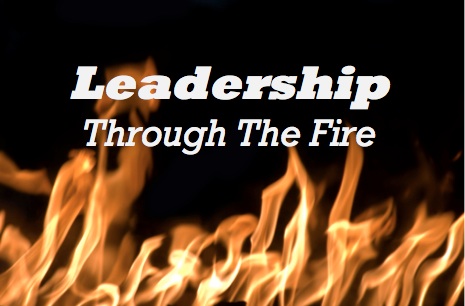Most leaders I know yearn to spend their time being strategic and doing interesting work but much of their days are frequently caught up in fighting fires. Sound familiar? From daybreak to sunset fires are constantly flaring up at work leaving little time to focus on other key leadership priorities such as mentoring and coaching.
Yesterday, I was talking to a local fireman about his work. In the Outback of Australia, when firefighters are called out to a fire, they don’t bring a hose and hook up to the nearest hydrant. Instead, all the water that they have to use, they bring with them in their truck. I never really thought about it, and I really started to get curious in the hours that followed about how they do it. How do they put the fires out? What lessons can leaders take from the brave firefighters of the Outback?
- Start with Containment – Fires can quickly spread out of control taking up not only the time and energy of leaders but also every single person on the team. If everyone is focused on the fire, no one is continuing to move the work forward. Leaders need to shield their teams from the heat so they can continue to make progress with confidence and creativity.
- Advise the Community of Fire Movements – Firefighters are keenly aware of the local communities and always keep them in the loop. Leaders, you too need to keep your team informed if evacuation of the current path may be necessary or let people know that they can breathe with ease. When people don’t hear from the leader, they make up stories to fill the gap. Communication is the key.
- Use What You Have – Bottom line? Be strategic. You can’t be everywhere at once fighting fires, leading your team, engaging with customers and executing on the work. Get all of the key players in a meeting so you can all discuss the issue at hand at once. Summarize via email so a trail of outcomes and shared agreements are documented. Empower the other leaders on your team to contribute to solutions – you’re not alone!
- Don’t Waste Water – Leaders, just like firefighters have limited water, you have limited time. Ask yourself before every conference call or emergency meeting, “Do I need to attend?” Can you send someone else on your team? Is it really just a rehash of what’s already been covered? Are you already in the process of taking action but being asked to simply report that you are in motion without time for results? Use your time wisely and if you are going to be sucked in by meeting after meeting, empower others to lead in your absence.
- Call in the Helicopter When You Need It – In the Outback, firefighters always call on a helicopter to join the fight from above when other resources are needed. Don’t assume that you need to push back the fire on your own at work. The people that you report to are there to support you. Before things are out of control ask for their time, counsel and if necessary, intervention.
- Learn From Every Fire – When the fire is out, don’t just move on to the next one. Do a post-mortem. What happened? How could it have been avoided? What did you learn from the experience? Most importantly, share the learning with others. Leaders – don’t expect your managers and teams to glean the ah-has unless you share them.
- Look for the Burning Platform and Spark Change – In the midst of all of the firefighting; you may spot a burning platform. If flares are coming from the same place over and over, stop the fight and make a change.
What have you learned from fighting fires in the wild world at work? Please share!
For coaching, consulting or speaking Let’s Connect!



Leave a Reply